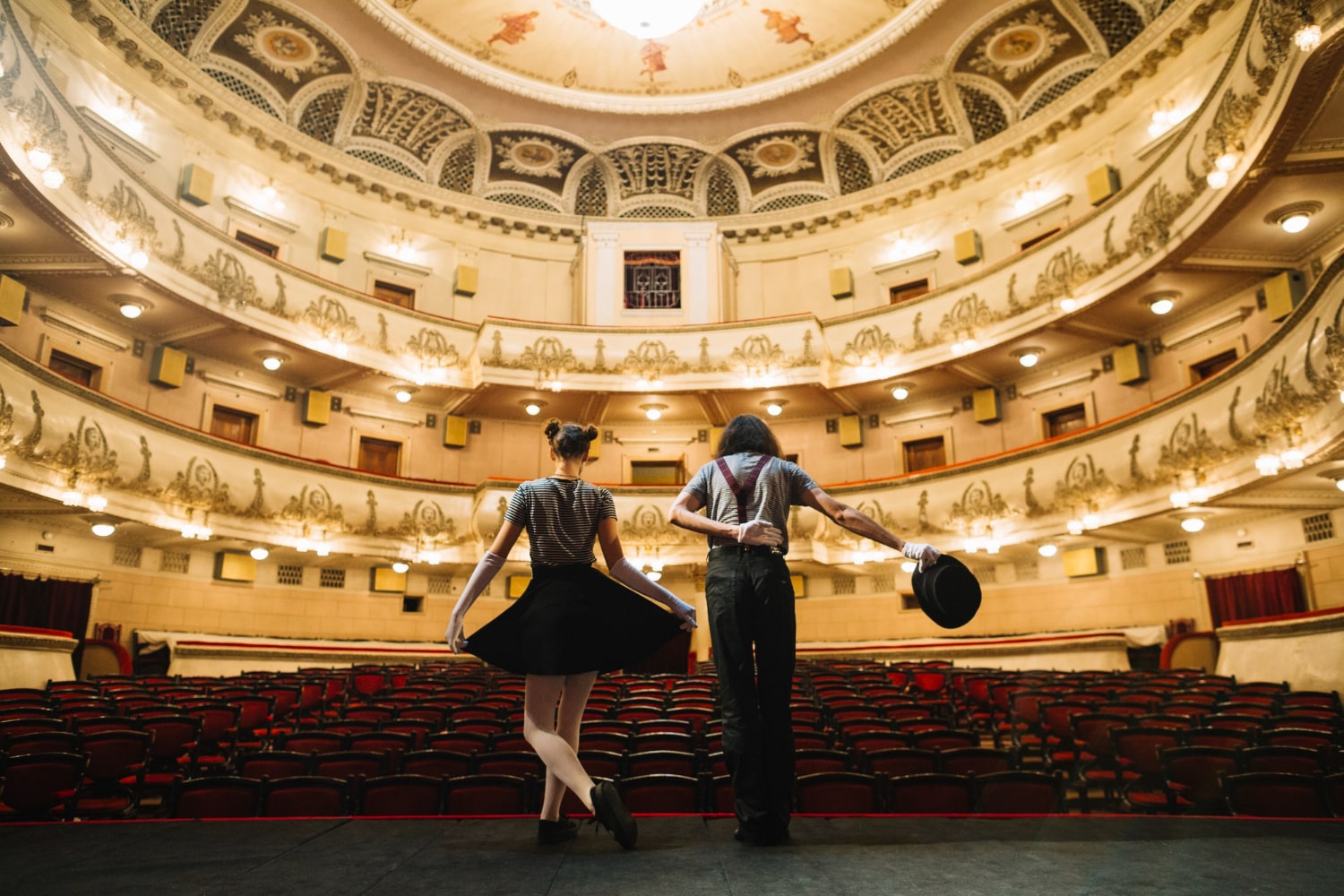
30 interesting facts about Shakespeare’s Globe Theatre
- 👁️ 290
Shakespeare’s Globe Theatre, a cultural and historical landmark, holds a significant place in the world of theatre. Built in 1599 in London, the original Globe Theatre was a prominent venue for the performances of William Shakespeare’s plays. Today’s reconstructed Globe Theatre, located near the original site, continues to captivate audiences with its authentic design and immersive theatrical experiences. Here are several fascinating facts about Shakespeare’s Globe Theatre:
- The original Globe Theatre was built in 1599 by Shakespeare’s playing company, the Lord Chamberlain’s Men.
- It was located on the south bank of the River Thames in the Southwark district of London.
- The theatre was a three-story, open-air structure with a capacity of around 3,000 spectators.
- The shape of the Globe Theatre was octagonal, with a large courtyard in the center known as the pit or “the yard.”
- The stage of the Globe Theatre was a rectangular platform that extended into the pit, allowing for close interaction between actors and the audience.
- Performances at the Globe Theatre were held during the day, as there was no artificial lighting.
- The original Globe Theatre was destroyed by a fire in 1613 during a performance of Shakespeare’s play, “Henry VIII.”
- The reconstructed Globe Theatre, known as Shakespeare’s Globe, was opened in 1997 just 750 feet away from the original site.
- The modern Globe Theatre closely replicates the design of the original theatre based on historical records and archaeological findings.
- The thatched roof of the Globe Theatre is made of Norfolk reed, as per the original construction methods.
- The theatre is an oak-framed structure, with no structural support from metal or nails, mirroring Elizabethan building techniques.
- The audience at Shakespeare’s Globe can experience the plays in two distinct seating areas: the groundling area (the yard) and the gallery.
- The groundlings, who stood in the yard, were the most affordable and engaged directly with the actors on stage.
- The gallery, with tiered seating, provided a more comfortable experience for wealthier patrons.
- The modern Globe Theatre can accommodate up to 1,500 spectators.
- Performances at the Globe Theatre embrace traditional Shakespearean practices, including all-male casts and period costumes.
- The theatre season at Shakespeare’s Globe runs from April to October, replicating the original summer season.
- The Globe Theatre has a “tiring house” or backstage area, where actors prepare and change costumes.
- The words “Totus mundus agit histrionem” (Latin for “the whole world is a playhouse”) are inscribed on the front of the Globe Theatre.
- The Globe Theatre has become a popular educational destination, offering workshops and tours to students and visitors.
- Shakespeare’s Globe hosts a variety of performances, including Shakespearean plays, contemporary works, and international productions.
- The theatre features authentic musical instruments, including the period-specific “tabor” and “sackbut.”
- The reconstructions of the Globe Theatre and its adjacent indoor venue, the Sam Wanamaker Playhouse, were overseen by American actor and director Sam Wanamaker.
- The Globe Theatre has become a significant symbol of Shakespeare’s legacy and the vibrant theatrical heritage of London.
- The design of the Globe Theatre was influenced by other Elizabethan theatre structures, such as the Swan and the Rose.
- The original Globe Theatre was frequented by a diverse audience, ranging from nobility to commoners.
- The Globe Theatre staged many of Shakespeare’s most famous plays, including “Romeo and Juliet,” “Hamlet,” and “Macbeth.”
- The flag flying above the Globe Theatre indicates the type of play being performed: a black flag for tragedies, a white flag for comedies, and a red flag for history plays.
- The reconstruction of the Globe Theatre was based on detailed drawings found in a 1596 sketchbook by Dutchman Johannes de Witt.
- The original Globe Theatre was a profitable enterprise, generating income from ticket sales and the Globe’s share in the Chamberlain’s Men acting company.
Shakespeare’s Globe Theatre stands as a testament to the enduring legacy of William Shakespeare and the vibrant Elizabethan theatre. From its historical significance and authentic design to the immersive theatrical experiences it offers today, the Globe Theatre continues to delight audiences and preserve the rich tradition of Shakespearean plays. It serves as a living reminder of the power of storytelling and the timeless appeal of Shakespeare’s works.
Shakespeare’s Globe Theatre, a cultural and historical landmark, holds a significant place in the world of theatre. Built in 1599 in London, the original Globe Theatre was a prominent venue for the performances of William Shakespeare’s plays. Today’s reconstructed Globe Theatre, located near the original site, continues to captivate audiences…